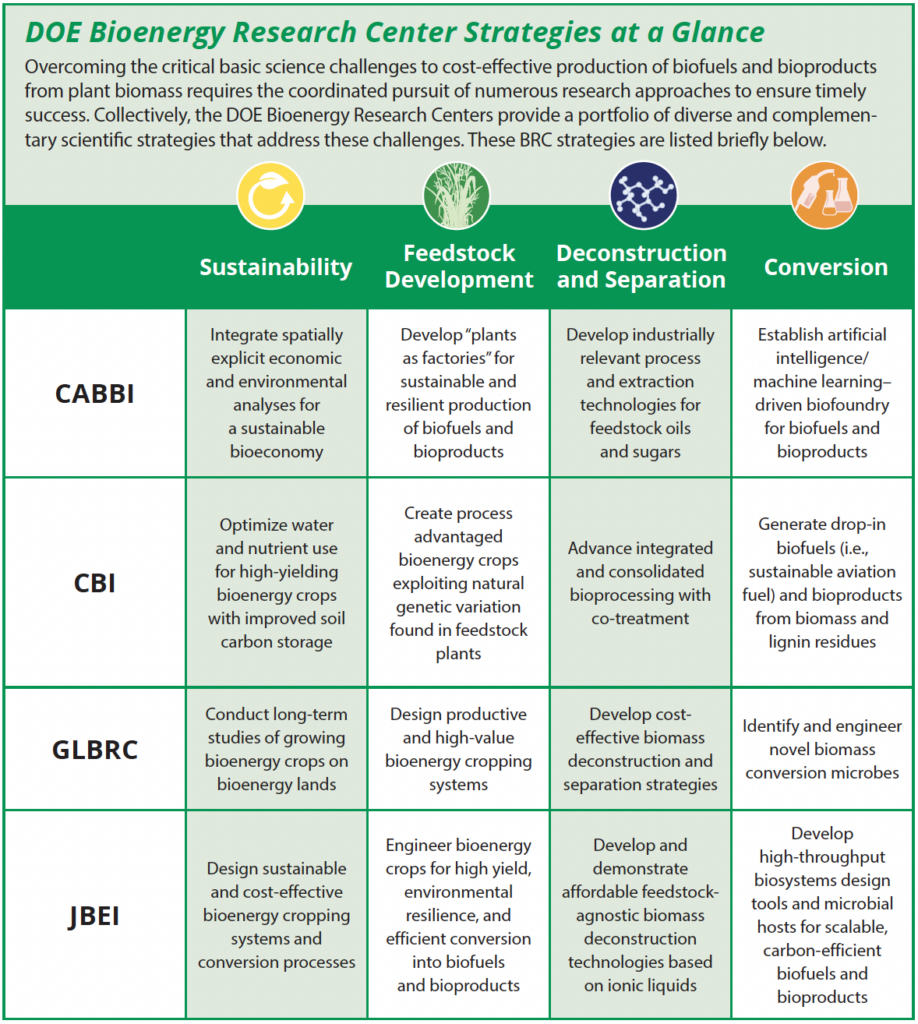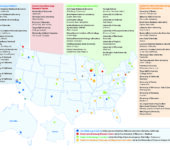Multiple societal benefits underlie U.S. Department of Energy (DOE) research efforts to support a viable and sustainable domestic biofuels and bioproducts industry derived from nonfood lignocellulosic plant biomass. More specifically, these benefits include ensuring future energy security, lowering greenhouse gases to mitigate climate impacts, expanding the diversity and range of available biobased products, producing fewer toxic chemicals and waste products, creating jobs in rural areas, and improving the trade balance.
Lignocellulose is the most abundant biological material on Earth. Most often contained in plant cell walls, it is composed of two kinds of carbohydrate polymers, cellulose and hemicellulose, and an aromatic-rich polymer called lignin. Although cellulose can be converted into biofuels and bioproducts by microbes, the matrix of cellulose, hemicellulose, and lignin in plant cell walls is highly resistant to degradation. This resistance or recalcitrance, along with a lack of efficient methods to convert lignocellulose to useful products, are major impediments to the cost-effective production of biofuels and bioproducts from plant biomass. Innovation stemming from research based on advanced biotechnology is key to accelerating needed improvements in the sustainable production of lignocellulosic biomass, its deconstruction into sugars and lignin, and conversion to biofuels and bioproducts.
The Four Centers
The Bioenergy Research Center (BRC) program’s mission is to break down the barriers to actualizing a domestic bioenergy industry. The centers—each led by a DOE national laboratory or top university—take distinctive approaches toward the common goal of accelerating the pathway to improving and scaling up advanced biofuel and bioproduct production processes. The four current centers are:
- Center for Advanced Bioenergy and Bioproducts Innovation (CABBI), led by the University of Illinois at Urbana-Champaign. CABBI is integrating recent advances in agronomics, genomics, biosystems design, and computational biology to increase the value of energy crops, using a “plants as factories” approach to grow fuels and chemicals in plant stems and an automated foundry to convert biomass into valuable chemicals that are ecologically and economically sustainable.
- Center for Bioenergy Innovation (CBI), led by Oak Ridge National Laboratory. CBI is accelerating the domestication of bioenergy-relevant plants and microbes to enable high impact, value-added coproduct development at multiple points in the bioenergy supply chain.
- Great Lakes Bioenergy Research Center (GLBRC), led by the University of Wisconsin—Madison in partnership with Michigan State University. GLBRC is developing science and technological advances to ensure sustainability at each step in the process of creating biofuels and bioproducts from lignocellulose.
- Joint BioEnergy Institute (JBEI), led by DOE’s Lawrence Berkeley National Laboratory. JBEI is using the latest tools in molecular biology, chemical engineering, and computational and robotics technologies to transform biomass into biofuels and bioproducts.
BRC Legacy
Originally, DOE BER funded three BRCs over a period of 10 years (2007-2017). These three BRCs, supported by DOE’s Genomic Science program, made significant advances toward this new biobased economy. They produced multiple breakthroughs in the form of deepened understanding of sustainable biomass production practices, targeted reengineering of biomass feedstocks, development of new methods for deconstructing feedstocks, and engineering of microbes for more effective production of a diverse range of biofuels.

